May 2, 2023
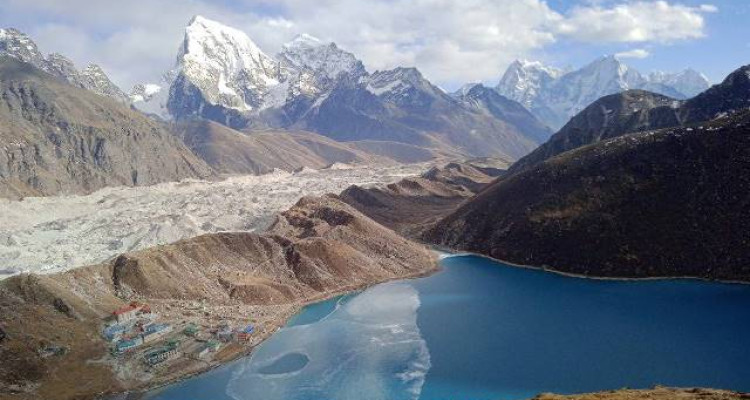
♦ Introduction to Gokyo Trekking
♦ Trekking Route and outline Itinerary for Gokyo Trek
♦ Best Time to Trek to Gokyo
♦ Permits and Regulations for Gokyo Trek
♦ Difficulty Level and Fitness Requirements for Gokyo Trek
♦ Altitude Sickness and Prevention in Gokyo Trek
♦ Accommodation and Food Options on Gokyo Trek
♦ Cost and Budget for Gokyo Trek
♦ Highlights and Scenic Views of Gokyo Trek
♦ Side Trips from Gokyo Trek
♦ Safety Measures and Emergency Procedures on Gokyo Trek
♦ What is fifth lake in Gokyo trek and why we should go there?
♦ First Time Trekkers Guide To Gokyo valley trek
♦ Is possible to extend the Gokyo Trek to Everest Base Camp(EBC)?
♦ Cho La Pass crossing from Thangnak to Dzongla
♦ Temperature and weather chart for Gokyo Trekking
♦ Stunning View from Gokyo ri
♦ Gokyo trek cost for Indian trekkers
♦ Hidden things that people normally never explore in the Gokyo Valley Trek
If you’re looking for a trek that offers the perfect combination of adventure and serenity, the Gokyo Lake Trek should be on your list. This trek will take you to one of the most beautiful regions in Nepal, the Solukhumbu district, where you’ll find stunning views of the Himalayan range, pristine lakes, and picturesque villages.
To make the most out of your Gokyo Lake Trek, you need to choose a reliable and experienced travel company in Nepal. One of the best travel companies in Nepal is Safe Holiday Adventure. This travel agency has been providing top-notch trekking services to travelers from all around the world for many years. Safe Holiday Adventure is known for its excellent customer service, expert guides, and customized trekking itineraries.
The team of expert guides at Safe Holiday Adventure are experienced in leading trekkers to the most beautiful and remote regions of the Himalayas. They have extensive knowledge of the terrain, culture, and local customs, making them the perfect companions for your Gokyo Lake Trek. The guides at Safe Holiday Adventure are also trained in wilderness first aid and are equipped to handle any emergency situations that may arise during the trek.
The Gokyo Lake Trek is a moderate-level trek that starts in the small town of Lukla and takes you through the Khumbu Valley. The trek offers stunning views of the world’s highest mountain, Mount Everest, as well as several other peaks that are over 8,000 meters tall. Along the way, you’ll pass through charming Sherpa villages, where you can experience the local culture and lifestyle.
One of the highlights of the Gokyo Lake Trek is, of course, the Gokyo Lakes. The trek takes you to five glacial lakes, all located at an altitude of over 4,700 meters. The lakes are famous for their crystal-clear waters and stunning views of the surrounding mountains. You’ll also have the opportunity to hike up to Gokyo Ri, a peak that offers breathtaking panoramic views of the Himalayas.
The Gokyo Lake Trek is a great alternative to the more popular Everest Base Camp Trek. It’s less crowded, but still offers the same stunning views of the Himalayas. The trek is also more peaceful, as you’ll have the chance to explore remote villages and enjoy the tranquility of the lakes.
Safe Holiday Adventure can customize your Gokyo Lake Trek to suit your preferences and fitness level. You can choose a shorter or longer itinerary, depending on how much time you have and how challenging you want the trek to be. The travel agency will also take care of all the logistics, including permits, accommodation, transportation, and meals, so you can focus on enjoying your trek.
In conclusion, the Gokyo Lake Trek is an excellent choice for anyone looking for a trek that offers adventure and serenity. Safe Holiday Adventure. is the perfect travel company to make your trekking experience in Nepal unforgettable. With their expert freelancer guides, customized itineraries, and excellent customer service, you can rest assured that you’ll have a safe and enjoyable trek to the Gokyo Lakes.
The Gokyo Trek is a popular trekking route in the Everest region of Nepal, offering stunning views of the Himalayas and the turquoise Gokyo Lakes. Here is an outline itinerary for the Gokyo Trek:
Day 1: Fly from Kathmandu to Lukla (2,860m) and trek to Phakding (2,610m)
Day 2: Trek from Phakding to Namche Bazaar (3,440m)
Day 3: Rest day in Namche Bazaar for acclimatization
Day 4: Trek from Namche Bazaar to Phortse Thanga (3,680m)
Day 5: Trek from Phortse Thanga to Machhermo (4,470m)
Day 6: Trek from Machhermo to Gokyo (4,800m)
Day 7: Rest day in Gokyo for acclimatization, hike to Gokyo Ri (5,357m) for panoramic views
Day 8: Trek from Gokyo to Thaknak (4,750m)
Day 9: Trek from Thaknak to Namche Bazaar via Cho La Pass (5,420m
Day 10: Trek from Namche Bazaar to Lukla
Day 11: Fly back to Kathmandu from Lukla
Note: The itinerary can be adjusted according to your preferences and fitness level. It is important to follow a gradual ascent to prevent altitude sickness.
The best time to trek to Gokyo is during the pre-monsoon (spring) season (March to May) and post-monsoon (autumn) season (September to November). During these times, the weather is generally dry and clear, and the views of the mountains are spectacular.
In the spring season, the temperatures are mild, and the rhododendron forests along the trail are in full bloom, adding to the beauty of the trek. The skies are generally clear, and the visibility is excellent.
In the autumn season, the weather is also stable with clear skies and excellent visibility. The temperatures are cool, making it comfortable for trekking during the day, and the autumn colors of the trees and foliage are breathtaking.
During the winter season (December to February), the temperatures can drop to sub-zero, and the trail can be covered with snow. Trekking during this time can be challenging, but the views of the snow-capped mountains are still stunning.
The monsoon season (June to August) is not recommended for trekking to Gokyo as the trail can be slippery and muddy due to heavy rainfall, and the visibility can be poor due to clouds and fog.
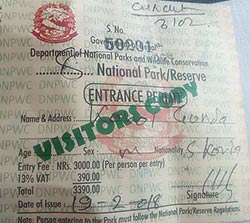
To trek to Gokyo, you need to obtain the following permits:
Sagarmatha National Park Permit: All trekkers entering the Sagarmatha National Park need to obtain a permit. The permit can be obtained at the National Park entrance gate in Monjo or at the Nepal Tourism Board office in Kathmandu.
TIMS Card: The Trekker’s Information Management System (TIMS) card is mandatory for all trekkers. It is issued by the Trekking Agencies Association of Nepal (TAAN) and can be obtained at their office in Kathmandu or at the Nepal Tourism Board office.
Note: As of October 2018, TIMS cards are not required for independent trekkers. However, it is still recommended to obtain one for safety reasons.
Local Government Permit : Trekkers need to obtain a local government permit from the Khumbu Pasang Lhamu Rural Municipality office in Lukla or the Sagarmatha Pollution Control Committee (SPCC) office in Monjo.
In addition to the permits, there are a few regulations that need to be followed while trekking in the Everest region:
The Gokyo Trek is a moderate to difficult trek, and it requires a good level of physical fitness and stamina. The trail involves long days of walking, steep ascents, and descents, and trekking at high altitudes, which can be physically demanding.
The highest point on the Gokyo Trek is the Cho La Pass, which is at an altitude of 5,420 meters. Trekking at such altitudes can cause altitude sickness, which is why acclimatization is crucial. Trekkers need to take sufficient rest days to acclimatize to the high altitude and avoid any health risks.
To prepare for the Gokyo Trek, it is recommended to engage in regular physical exercise and cardio workouts to build up endurance and stamina. It is also advisable to do some high-altitude trekking or hiking before embarking on the Gokyo Trek.
A positive attitude, mental toughness, and willingness to take on the challenge are also essential to successfully complete the Gokyo Trek. While there are no technical climbs or mountaineering skills required, trekkers should be prepared to walk for long hours on rocky terrain, steep ascents, and descents.
Overall, the Gokyo Trek is a challenging yet rewarding experience that requires preparation, physical fitness, and a positive mindset.
Altitude sickness, also known as acute mountain sickness (AMS), is a common condition that can affect trekkers while trekking in high altitude areas like the Gokyo Trek. AMS is caused by the decreased availability of oxygen at high altitudes and can cause symptoms like headache, nausea, dizziness, fatigue, and shortness of breath.
To prevent AMS while trekking to Gokyo, it is essential to follow proper acclimatization practices. This involves taking regular rest days, drinking plenty of fluids, and ascending gradually. Trekkers should not ascend more than 300-500 meters per day once they cross the altitude of 3000 meters. It is also advisable to sleep at a lower altitude than the highest point reached during the day’s trek.
Additionally, it is important to maintain a balanced diet and avoid alcohol and smoking while trekking to high altitude areas. Trekkers should also be aware of the symptoms of AMS and inform their guide or trekking companions immediately if they experience any symptoms.
In case of mild AMS symptoms, trekkers should rest, drink plenty of fluids, and take medication like acetaminophen or ibuprofen to alleviate symptoms. If the symptoms worsen or do not improve, it is advisable to descend to a lower altitude immediately and seek medical attention.
Accommodation and food options on the Gokyo Trek are plentiful, and trekkers can find teahouses or lodges at regular intervals along the trail. These teahouses provide basic accommodation with simple rooms and shared bathrooms. Most teahouses have blankets and pillows, but it is recommended to bring a sleeping bag for added warmth.
Food options in teahouses are also basic but provide a variety of local and western dishes. The most common meals served are Dal Bhat (a traditional Nepali meal consisting of rice, lentil soup, vegetables, and meat), noodles, soups, and sandwiches. In addition to these options, teahouses also serve snacks, hot drinks, and beverages.
It is important to note that food and accommodation options may become limited in the higher altitudes, and the menu may become less diverse. Additionally, during peak trekking season, it is advisable to book accommodations in advance as teahouses may become full.
It is also possible to camp along the Gokyo Trek, but camping equipment needs to be carried by the trekker. Camping provides more flexibility in terms of itinerary and food options, but it requires more preparation and organization.
The cost and budget for the Gokyo Trek can vary depending on a few factors such as the length of the trek, the type of accommodations, and the level of support you require. Here’s a breakdown of the costs:
Trekking Permits: A Sagarmatha National Park Permit is required for this trek, which costs about USD 34 per person. Additionally, a Gokyo Lakes permit is required, which costs about USD 20 per person.
Transportation: The cost of transportation varies depending on your starting point, but typically includes a flight from Kathmandu to Lukla, which costs about USD 170-200 each way.
Accommodation and Food: The cost of accommodation and food varies depending on the type of accommodation you choose. Budget lodges charge around USD 3-5 per night for a basic room and meals can cost between USD 6-10 per day. More comfortable lodges can charge up to USD 30-40 per night for a room and meals.
Guide and Porter: Hiring a guide and porter can be beneficial for navigation and carrying your luggage. A guide can cost between USD 20-30 per day, while a porter can cost between USD 15-20 per day.
Overall, the cost for the Gokyo Trek can range from USD 600 to USD 1500 per person for a 12-14 day trek, depending on your choices and requirements. It’s important to keep in mind that prices can vary depending on the season and availability of services.
The Gokyo Trek is a spectacular trek in the Everest region of Nepal, which offers breathtaking views of snow-capped peaks, glaciers, and high-altitude lakes. Here are some of the highlights and scenic views of the Gokyo Trek:
The Gokyo Trek offers several side trips that you can take to enhance your trekking experience. Here are some of the most popular side trips from the Gokyo Trek:
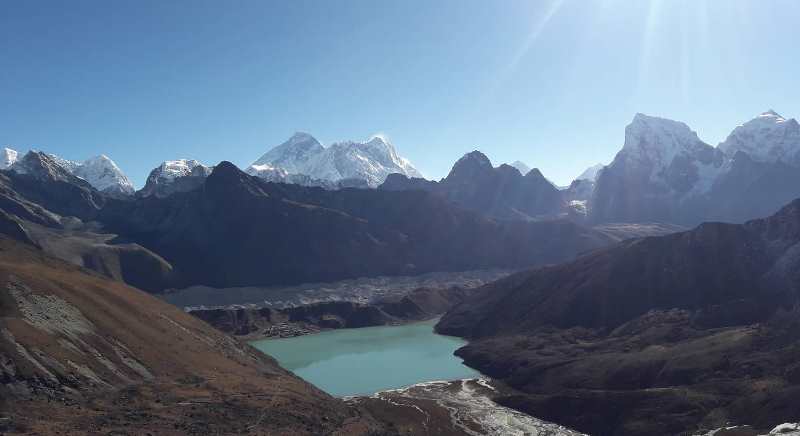
The Gokyo Trek is a beautiful and adventurous trekking route in the Everest region of Nepal, but it can also be a challenging one. Here are some safety measures and emergency procedures you should be aware of before embarking on this trek:
Remember to follow these safety measures and emergency procedures to ensure a safe and enjoyable trek on the Gokyo route.
The Fifth Lake, also known as the Ngozumpa Tsho, is one of the main attractions of the Gokyo trek. It is located at an altitude of 4,990 meters (16,371 feet) above sea level, making it one of the highest lakes in the world.
The Fifth Lake is the largest of the six Gokyo Lakes and is considered sacred by the local people. The lake is surrounded by magnificent mountains, including Cho Oyu (8,188 meters) and Gyachung Kang (7,922 meters), which provide a stunning backdrop to the lake’s crystal-clear waters.
Visitors to the Fifth Lake can enjoy panoramic views of the surrounding mountains and glaciers. The lake itself is a brilliant shade of blue, and its waters are home to several species of fish. It is a popular spot for trekkers to take a break and enjoy the scenery before continuing on to the Gokyo Ri viewpoint, which offers a spectacular view of the entire Gokyo valley.
The Fifth Lake is an important site for both cultural and natural reasons. It is believed to be the abode of a local deity, and as such, visitors are asked to respect the cultural significance of the lake by not polluting its waters or leaving any trash behind.
Overall, the Fifth Lake is a must-visit destination on the Gokyo trek, offering unparalleled natural beauty and cultural significance.
The distance between Gokyo and Gokyo Ri is approximately 3.5 kilometers (2.2 miles) one way. The hike to Gokyo Ri involves a steep ascent of approximately 550 meters (1,800 feet) from Gokyo, and it typically takes between 2-3 hours to reach the summit.
After reaching the summit of Gokyo Ri, hikers usually spend some time taking in the incredible panoramic views of the surrounding mountains, including Cho Oyu, Everest, Lhotse, and Makalu, among others. The descent back to Gokyo usually takes around 1-2 hours, depending on the hiker’s pace.
In total, the round trip distance between Gokyo and Gokyo Ri is approximately 7 kilometers (4.3 miles), and the total hiking time including breaks and time spent at the summit is usually around 5-6 hours. However, it’s important to note that the hiking time can vary depending on the hiker’s level of fitness, acclimatization, and weather conditions.
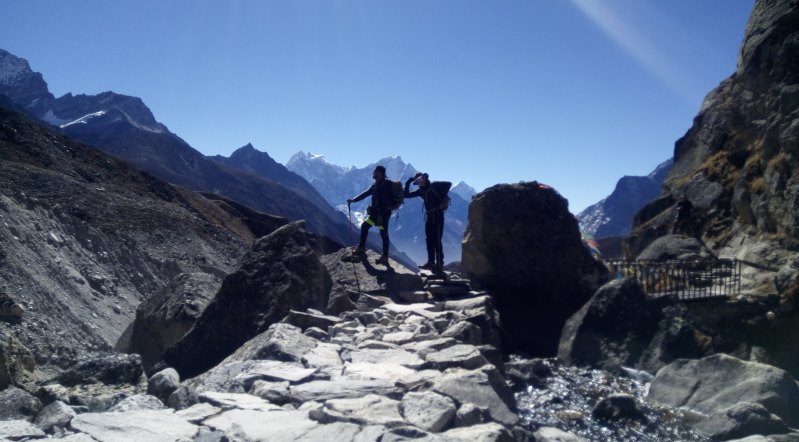
On the top of Chola pass
If you’re planning on trekking in Nepal, the Gokyo Valley Trek is one of the best options for first-time trekkers. Here’s a guide to help you prepare for the trek:
Getting there:
The trek starts with a flight to Lukla from Kathmandu. You will need to arrange your flights with a trekking company or travel agent.
Permits:
You will need a TIMS (Trekkers Information Management System) card and a Sagarmatha National Park permit. These can be obtained in Kathmandu or through a trekking company.
Gear:
Invest in a good pair of trekking boots, a waterproof jacket, warm layers, a hat, gloves, and sunglasses. You can rent some gear in Kathmandu, but it’s better to bring your own if possible.
Fitness:
You don’t need to be an athlete to complete this trek, but you should have a decent level of fitness. Start training a few months before your trek, focusing on cardio and leg strength exercises.
Altitude sickness:
Altitude sickness is a real concern on this trek. Make sure you take time to acclimatize by staying hydrated, eating well, and walking slowly. If you experience symptoms like headache, nausea, or dizziness, descend to a lower altitude immediately.
Trek itinerary:
The Gokyo Valley Trek is typically an 11-day trek, but it can be adjusted to fit your schedule. The trek takes you through picturesque villages, stunning mountain views, and turquoise lakes.
Accommodation:
Teahouses are the main form of accommodation on the trek. They offer basic but comfortable rooms and communal dining areas. Make sure you bring a sleeping bag and a headlamp.
Food and water:
Most teahouses offer a variety of Nepali and Western dishes. Stick to hot, cooked meals to avoid getting sick. Always bring a water bottle and use water purification tablets or a filter to purify water.
Yes, it is possible to extend the Gokyo Trek to Everest Base Camp through the Cho La Pass. The Gokyo Trek and the Everest Base Camp Trek are two of the most popular trekking routes in the Everest region of Nepal, and they can be combined to make a longer and more challenging trek.
The Gokyo Trek typically takes around 10-12 days to complete and takes you through the stunning Gokyo Valley, which is known for its turquoise lakes and stunning views of the Himalayan mountains, including Mount Everest. The trek also takes you to the top of Gokyo Ri, which offers panoramic views of the surrounding mountains.
The trek to Everest Base Camp typically takes around 12-14 days to complete and takes you through some of the most iconic and breathtaking landscapes in the world, including the Khumbu Glacier, the Khumbu Icefall, and the Everest Base Camp itself.
To extend the Gokyo Trek to Everest Base Camp, you would need to cross the Cho La Pass, which is a high-altitude pass located at an altitude of 5,420 meters (17,782 feet). The pass is steep and challenging, but the views from the top are truly breathtaking. After crossing the pass, you would join the main trail to Everest Base Camp.
The entire Gokyo Trek to Everest Base Camp through the Cho La Pass typically takes around 18-20 days to complete, and requires a good level of fitness and acclimatization to the high altitude. It is important to go with a reputable trekking company and experienced guide to ensure your safety and enjoyment of the trek.
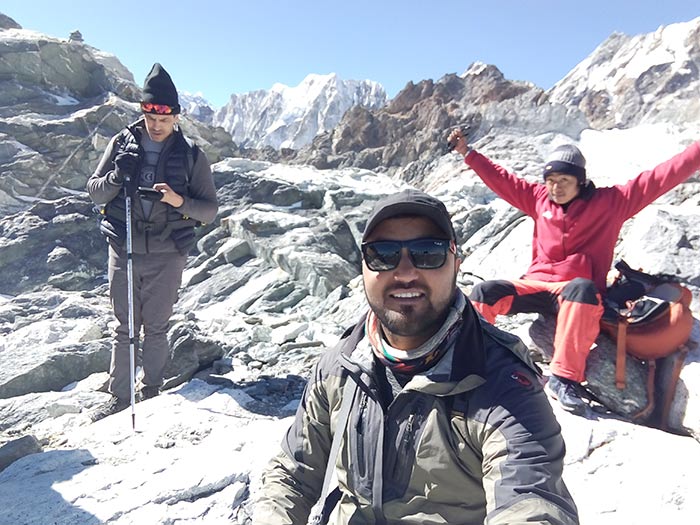
The Cho La Pass crossing from Thangnak to Dzongla is considered to be a challenging and strenuous trekking route in the Everest region of Nepal. The pass is located at an altitude of 5,420 meters (17,782 feet) and requires a good level of physical fitness and acclimatization to the high altitude.
The trail from Thangnak to Cho La Pass is steep and rocky, and involves a gradual ascent up to the pass. The trail can be difficult to navigate, especially in bad weather conditions, and there are some sections where you need to scramble over rocks and boulders.
Once you reach the top of the Cho La Pass, you will be rewarded with stunning panoramic views of the surrounding Himalayan mountains, including Ama Dablam, Cholatse, and Lobuche. The descent from the pass to Dzongla is steep and rocky, and involves some sections of loose scree and slippery rocks, so it is important to be cautious and take your time.
The weather in the Gokyo region of Nepal can be quite unpredictable and can change rapidly, especially during the monsoon season from June to August. It is important to be prepared for a range of weather conditions when trekking in this region. Here is a general temperature and weather chart for the Gokyo Trek:
October to November:
Temperature: Average daytime temperatures range from 5-15°C (41-59°F) and nighttime temperatures can drop below freezing.
Weather: Generally clear skies with minimal rainfall. The weather can be cold and dry, with occasional snowfall at higher elevations.
December to February:
Temperature: Average daytime temperatures range from -5 to 10°C (23-50°F) and nighttime temperatures can drop well below freezing.
Weather: Generally clear skies with occasional snowfall. The weather can be very cold and dry, with strong winds at higher elevations.
March to May:
Temperature: Average daytime temperatures range from 10-20°C (50-68°F) and nighttime temperatures can drop below freezing.
Weather: Generally clear skies with occasional rain and snow. The weather can be mild and dry, with occasional strong winds at higher elevations.
June to September:
Temperature: Average daytime temperatures range from 15-25°C (59-77°F) and nighttime temperatures can be around 5-10°C (41-50°F).
Weather: Monsoon season with frequent rainfall and occasional thunderstorms. The weather can be cloudy and humid, with poor visibility at higher elevations.
It is important to note that weather conditions can vary depending on the altitude and location along the trekking route. It is always recommended to check the weather forecast before setting out and to be prepared for a range of weather conditions.
The view from Gokyo Ri is breathtaking and offers panoramic views of some of the highest peaks in the world. From the summit of Gokyo Ri, you can see Mount Everest (8,848 meters), Lhotse (8,516 meters), Makalu (8,485 meters), Cho Oyu (8,188 meters), and many other peaks.
Here’s a list of some of the mountains that can be seen from Gokyo Ri, along with their altitudes:
The view from Gokyo Ri is truly unforgettable and is one of the highlights of the Gokyo and Gokyo Ri trek.
The cost of the Gokyo trek for Indian trekkers can vary depending on several factors, such as the time of year, the type of accommodation, and the number of days spent on the trek. However, here is an approximate breakdown of the costs for Indian trekkers:
Overall, the total cost of the Gokyo trek for Indian trekkers can range from INR 50,000 to INR 100,000 or more, depending on the level of comfort and services desired. It’s always a good idea to budget a little extra for unexpected expenses and to shop around to find the best deals on trekking agencies and accommodations.
Certainly, here are some hidden things that people normally never explore in the Gokyo Valley Trek in Everest Region:
Fifth Lake: The Gokyo Valley has five beautiful glacial lakes, with the fifth one being the most hidden and least explored. It requires a detour from the main trail and a steep hike to reach, but the stunning views of the lake and the surrounding mountains make it worth the effort.
Ngozumpa Glacier: The Ngozumpa Glacier is the longest glacier in the Himalayas and can be seen from several viewpoints along the Gokyo Valley Trek. However, few people venture onto the glacier itself to explore its fascinating ice formations and crevasses.
Gokyo Ri North: While most trekkers climb Gokyo Ri to the south, there is another peak to the north that offers a more challenging and less crowded climb. The views from the top are equally spectacular, but the hike requires more technical skill and experience.
Traditional Sherpa Villages: Many trekkers stay in the same few villages along the main trail and miss out on the chance to explore the traditional Sherpa villages hidden in the valleys and side trails. These villages offer a glimpse into the local culture and way of life.
Hidden Waterfalls: There are several hidden waterfalls along the Gokyo Valley Trek that can be discovered by exploring side trails and detours. These waterfalls offer refreshing rest stops and beautiful photo opportunities.
Dudh Kunda Lake: Dudh Kunda Lake is a sacred lake located near the end of the Gokyo Valley Trek that is surrounded by stunning mountain views. Few trekkers venture this far, but those who do are rewarded with a peaceful and spiritual experience.